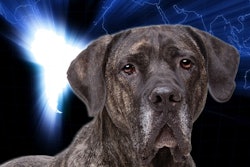
An analysis of the nutritional values present in 20 varieties of canned or boxed wet dog food conducted by The Consumer Council in Hong Kong revealed that 80% failed to meet internationally recommended nutritional levels to be considered complete dog food.
Only four models or products were found to fully comply with the standards established by the Association of American Feed Control Officials (AAFCO), the European Pet Food Industry Federation (FEDIAF) and the National Research Council (NRC) for complete pet food.
The council analyzed the macro- and micronutrients present in five complementary wet dog foods and in 15 wet dog foods that claim to be “complete and balanced” based on the nutritional levels set by AAFCO Dog Food Nutrient Profiles. The council also evaluated all samples for harmful substances like lead.
The Consumer Council has been an independent statutory authority in Hong Kong since 1974 mandated to protect consumer welfare. It did not specify the names of the pet food brands reviewed.
Complete dog food results
At least a dozen of the tested pet foods were found lacking two to eight types of minerals; two “complete” dog food samples scored low in five types of recommended minerals, while two samples of complete food fell short of the minimum Vitamin D3 requirement for adult dogs.
Based on the council's report, the tested pet food models were generally found to contain insufficient or excessive levels of copper and zinc. In fact, one model's magnesium, copper, manganese, zinc and iodine content all failed to meet the minimum recommended concentrations suggested by pet food experts.
The test also found that three models of complete pet food had a relatively low concentration of amino acids, with the lowest model only containing 0.29% (on dry-matter basis) methionine, which did not meet the minimum concentration recommended by AAFCO and FEDIAF. Although the total methionine and cystine content of all three samples (0.69% to 0.79%) met AAFCO’s minimum recommended concentrations, they failed to fully comply with the relevant minimum level (0.76% to 0.88%) recommended by FEDIAF.
Complementary dog food results
Among the wet pet food products tested by Hong Kong's Consumer Council, three complementary models proved of more concern in terms of their mineral content. In general, their calcium, iron, copper, manganese, zinc and iodine contents were relatively low, while the calcium-to-phosphorus ratio was also quite low, the report showed. A report from The Standard said that these three were Applaws Natural Dog Food (Chicken Breast with Ham and Vegetables), Forest Chicken Recipe in Jelly (Complementary food for Dogs & Cats) and Kakato Premium Pet Food (Simmered Chicken with Fish Maw and Goji Berries).
One complementary pet food sample didn't have Vitamin D, the long-term absence of which can upset the balance of calcium and phosphorus in the animal's blood and affect its immune system. The report warned that lack of Vitamin D in a dog's diet might even cause rickets or affect the bone growth of puppies, as well as other potential problems such as osteoporosis for adult dogs.
The council's foray into pet food testing also revealed that one complementary model had a crude fat amount (5.3%) slightly lower than the 5.5% minimum concentration recommended by AAFCO and FEDIAF for complete pet food for adult dogs, while all the remaining models met the relevant recommended minimum concentration. The results also showed that five models of complementary pet food showed a greater variance in crude protein (27.5% to 97%) and crude fat (5.3% to 34.5%), a variance of up to 2.5 times and 5.5 times, respectively. The two models with the highest crude protein content contained 78% and 97%, respectively, but were not labeled with the recommended daily serving size. The model with the highest crude fat content (34.5%) showed a distinctly higher fat percentage.
Harmful additions and omissions
Meanwhile, the council reported that four wet pet food samples contained lead and exceeded the maximum limit permitted by European Union (EU) legislation for complementary pet food (10mg/kg). Lead could accumulate in animals’ bodies and excessive intake of lead could affect the brain and nervous system of dogs.
Nine models were found to contain arsenic or cadmium, of which two models had trace amounts of melamine, though the levels did not exceed the stipulated maximum limit of the EU standard (2.5mg/kg) and presumably would not cause health risks to dogs.
The Hong Kong Consumer Council also warned against negligence in pet food labeling as one model of complementary pet food completely did not declare its product nature. Eight samples had no clear feeding instructions and one model printed its ingredients in Japanese.















